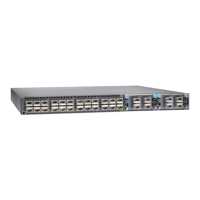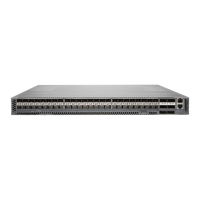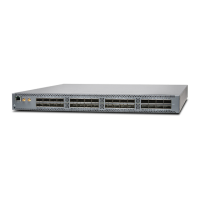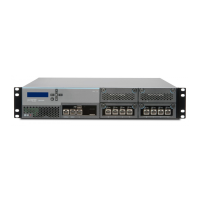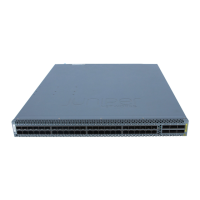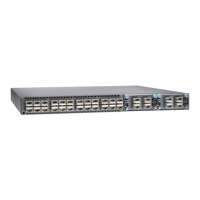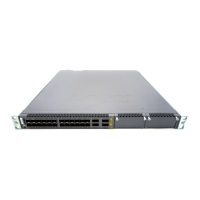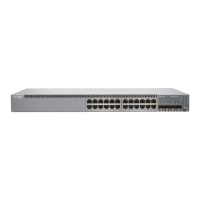NOTE: The QSFP+ uplink ports are not supported in Junos OS Release 11.1.
The QSFP+ uplink ports are supported in Junos OS Release 11.2 and later. To
configure the ports as 40-Gigabit Ethernet interfaces, you must be using
Junos OS Release 12.2X50-D20 or later.
Figure 4: QSFP+ Uplink Port Locations
QSFP+ ports
LA
ST
LA
ST
LA
ST
LA
ST
Q0 Q1 Q2 Q3 24 25 26 27 28 29 30 31 32 33 34 35 36 37 38 39 40 41 42 43 44 45 46 470 1 2 3 4 5 6 7 8 9 34 35 36 37 38 39 40 41 42 43 44 45 46 47
LA
ST
LA
ST
LA
ST
LA
ST
Q0 Q1 Q2 Q3
g050023
xe- 0/1/0
or
xe-0/1/1*
through xe-0/1/3
xe-0/1/4
through xe-0/1/7
xe-0/1/8
through xe-0/1/11
xe-0/1/12
through xe-0/1/15
*Port availability is release dependent.
See the topic on Channelizing Interfaces for your Junos Release.
Related
Documentation
Field-Replaceable Units in a QFX3500 Device on page 18•
• Site Preparation Checklist for a QFX3500 Device on page 45
• Access Port and Uplink Port LEDs on a QFX3500 Device on page 21
• Installing and Removing QFX3500 Device Hardware Components on page 121
Understanding Redundancy of QFX3500 Device Components and Functionality
The following hardware components provide redundancy on a QFX3500 device:
•
Power supplies—The QFX3500 device has one or two power supplies. Each power
supply provides power to all components in the device. If two power supplies are
installed, the two power supplies provide full power redundancy to the device. If one
power supply fails or is removed, the second power supply balances the electrical load
without interruption.
To provide power redundancy to the system both power supplies must be installed.
Connect power source feed A to one power supply and power source feed B to the
second power supply.
CAUTION: Do not connect feed A and feed B to the same power supply
input terminal.
•
Cooling system—The QFX3500 device has two fan trays. Additional cooling is provided
by two fan modules on the management board. If a fan module on a fan tray or
management board fails and is unable to keep the QFX3500 device within the desired
7Copyright © 2017, Juniper Networks, Inc.
Chapter 1: System Overview
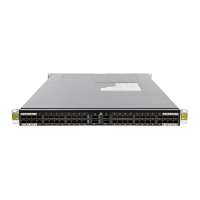
